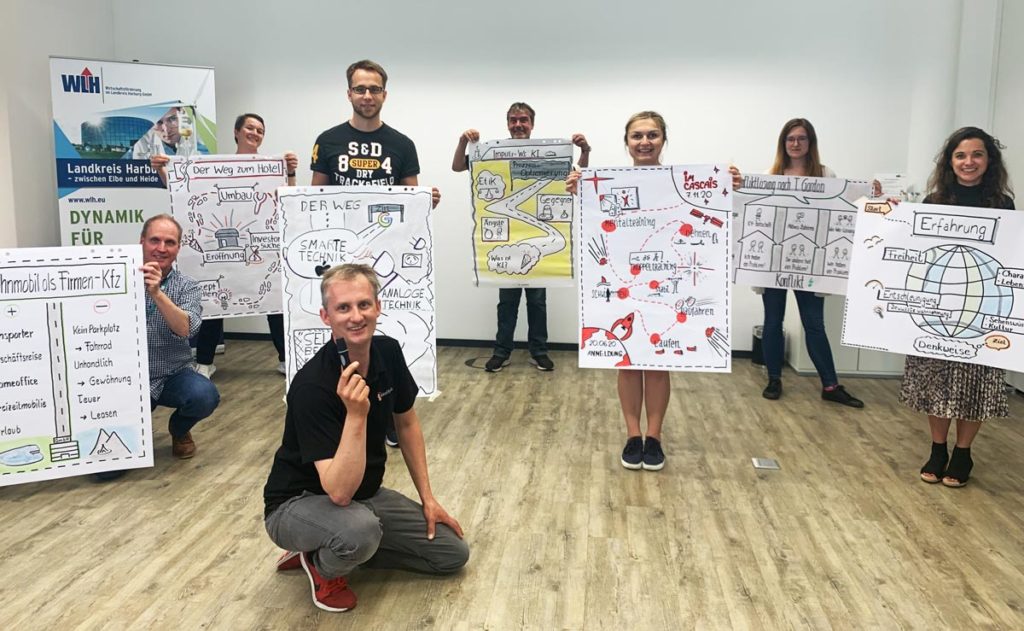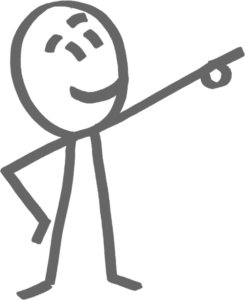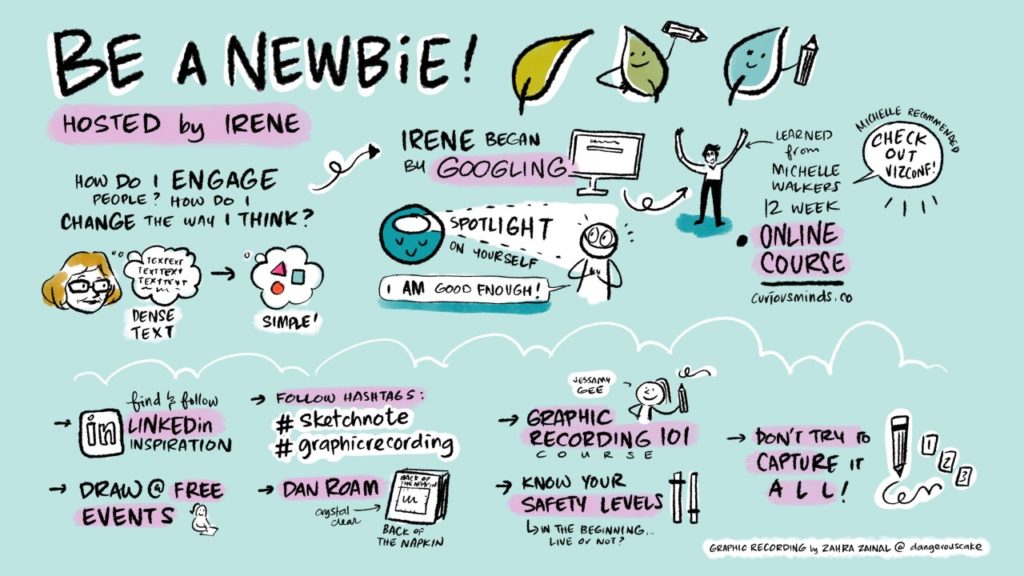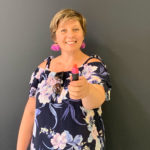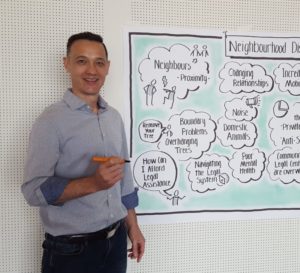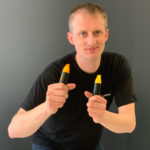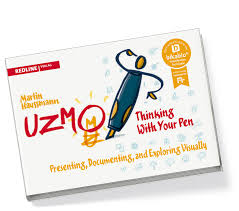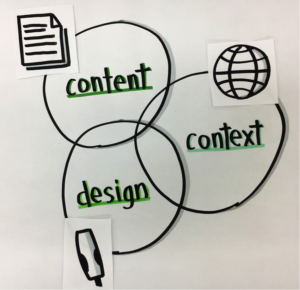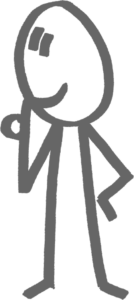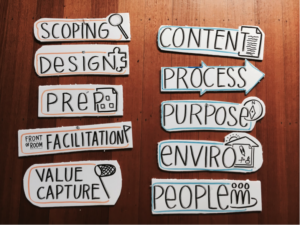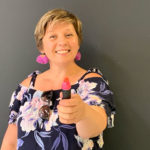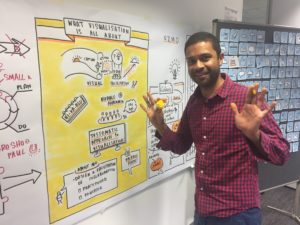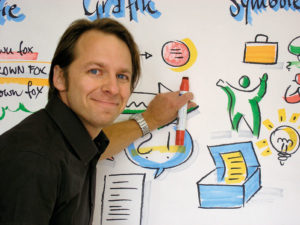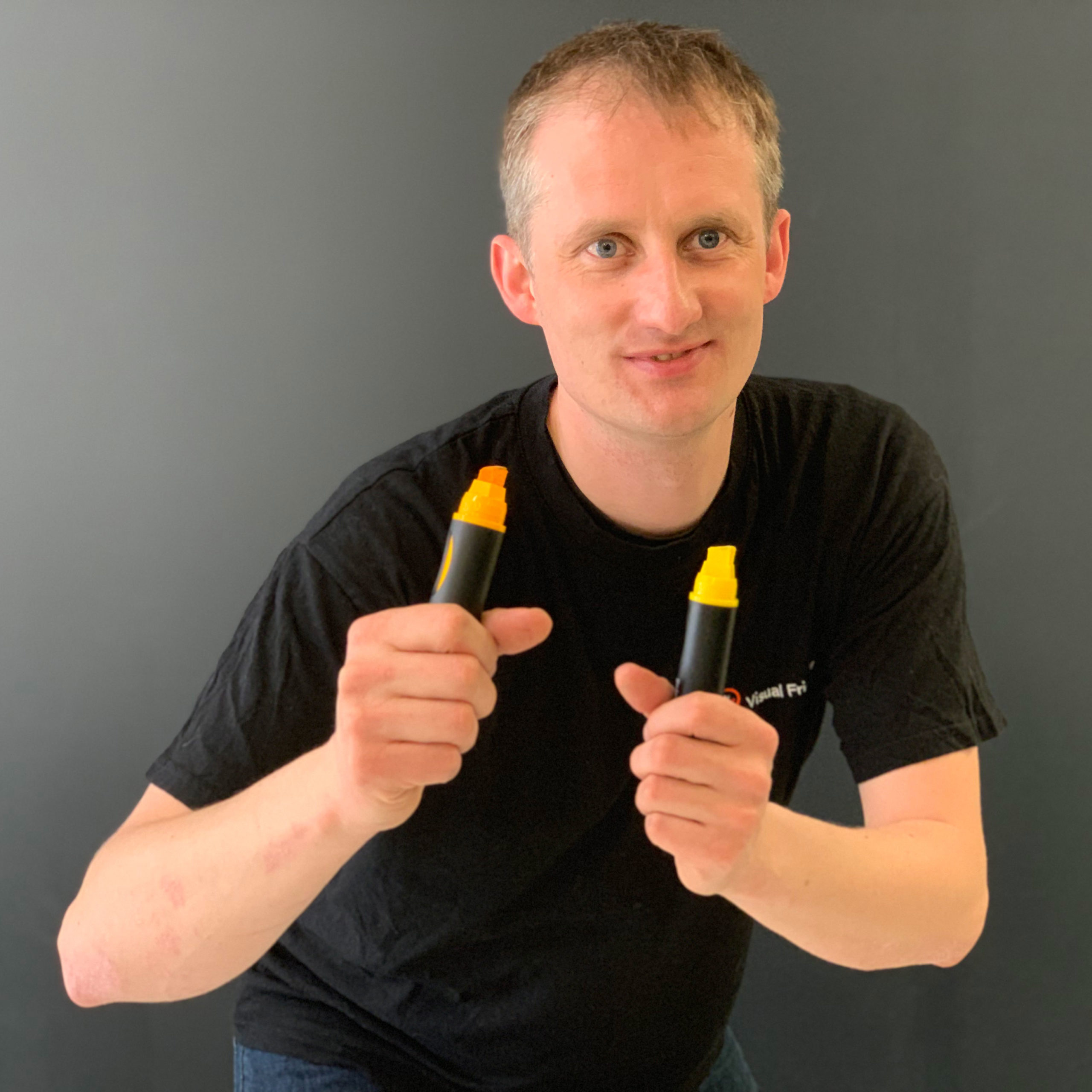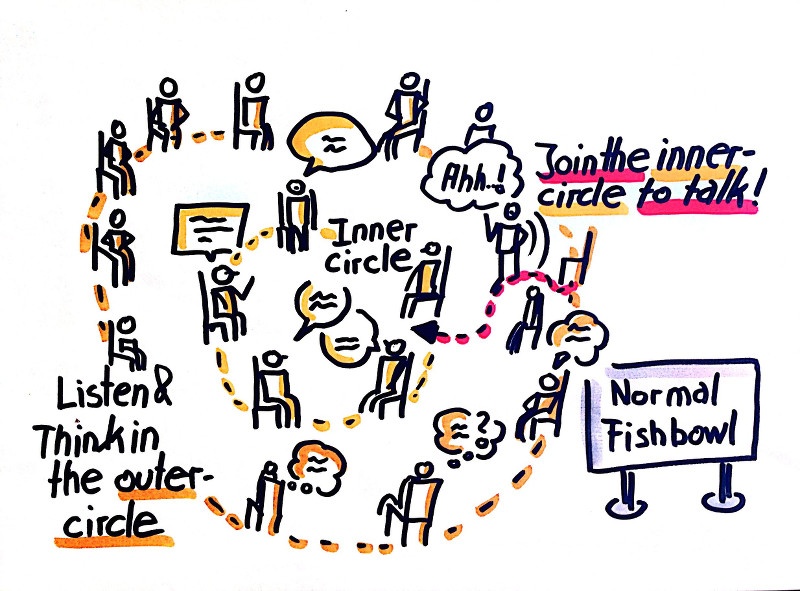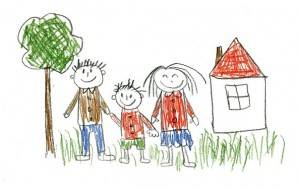Nicole: For me, the biggest tip is, don’t be afraid to not know everything and pass the pen on to someone else who knows more.
Marcel: Welcome everybody to the bikablo® radio, the Visual Facilitation Podcast. With me here today in Melbourne is Nicole Brand. Welcome, Nicole.
Nicole: Hi, everyone. Thank you, Marcel.
Marcel: Nicole is working as a product owner in a company called MYOB. Tell us a bit about who you are, where you come from, what you do?
Nicole: Yes, sure. I’ve been living in Melbourne for the last 20 years. Absolutely love it. It is my new home. I live with a couple of cats. I could be a crazy cat lady in the making.
Marcel: Great.
Nicole: When I’m not at home with my cats then I’m out practising yoga and learning how to be a yoga teacher which is also really exciting and if you can’t tell I do like trying to keep myself busy and doing 101 different things. I also work at MYOB as a product owner. I have been with the MYOB for the last 13 years. So I’ve actually been able to work in a number of different roles over the last six or seven years.
Marcel: You came to bikablo® visual facilitation drawing class 11 months ago.
Nicole: Yes.
Marcel: When you look before that time, how was your way of working differently?
Nicole: Yeah, sure. Really, really different. Within MYOB I’ve had a number of different roles, but at all times I’ve always had to collaborate and work with people. Interestingly, I never really felt equipped or I had the tools or the resources to really facilitate a good meeting and drive to the outcomes. Back then it was quite common to have meetings that didn’t really end with a solution or a resolution or with the outcome that we’re looking for which is perpetuating itself into more meetings.
I also didn’t necessarily have the confidence as well to actually facilitate and to drive things to the right outcomes because I didn’t really feel like I necessarily have the tools. I actually had just a life of meetings.
Marcel: A life of meetings, yes. They don’t always come to an outcome and you felt like you don’t have the right tools to drive those meetings.
Nicole: Yeah, absolutely. Sometimes we would actually have people in the room who would be able to drive things to the right outcomes, but it was not something that I necessarily felt empowered to do or that I felt confident in doing. I mean, to grab a pen and walk up to a whiteboard. No, thank you. That was definitely not my mode of operation. Especially not with the sort of other stakeholders and management there. Yeah, definitely not.
Marcel: Then you came then to the training last October and you went to quite a journey with me, you’ll agree. We started the fundamentals class in October and then you came to the practitioner class. Then you actually gave me a hand another day with co-facilitating right and so you have done all the classes and so how has this played out for you? How’s the last journey of the last year?
Nicole: First of all, my confidence has increased dramatically over the last year. So much so that I’ve actually had colleagues walk up to me and tell me how they see me as being a completely different person to what they saw a couple of years ago.
Marcel: What is different about you?
Nicole: It’s being confident and being able to distil conversations down to an essence and being able to visualize that on a whiteboard and being able to take everyone on that journey. There’s nothing more powerful than actually taking a pen to a whiteboard engaging everyone in the room so that they’re all looking at you. Well, actually that’s the best part. They are not looking at you. They’re looking at the whiteboard which is also really nice. You don’t necessarily have all of the eyes on you.
Marcel: It’s not so confronting anymore.
Nicole: Yes.
Marcel: You now have the tool to break through and get the people on to a collaborative whiteboard drawing situation which is much more your playground.
Nicole: Exactly. Yes.
Marcel: Great. Give us an insight into how the day looks like now in your role. If I’m right, you work as a product owner now at MYOB for a team and how does a day look like for you now?
Nicole: Now I will have meetings, but definitely nowhere near as many. I mean ideally, everyone wants zero meetings but, yeah, that’s a perfect world, ideal thing. Now my meetings are actually reduced to half an hour. I do not book meetings longer than 30 minutes which is really quite exciting. Everyone walks in with a clear understanding after I’m able to basically take them through what it is they’re looking or we’re looking to talk about.
By the end, we’ve got clear action points, a clear understanding of who’s actually going to walk away with different pieces of work and it’s all done before people get an email. It’s all done in a way where people get buy-in into what it is that they are supposed to be doing. Probably one of the things that I’ve never really liked is walking into a meeting and then you have a conversation and you walk out, and an hour later the meeting notes come through and you’ve got things against your name and either (a) they don’t look like what you originally discussed or (b) you didn’t even know your name was there.
It’s just really nice to be able to walk away with that so that everyone has that clear understanding of what needs to happen next.
Marcel: That means in half an hour you fill a small piece of paper or you fill a wall or what?
Nicole: Thankfully, in the office in most of the meeting rooms we actually have two whiteboards. So more often then not I’ll usually have one or both whiteboards full.
Marcel: After half an hour, right. This is like two and a half square meters of space.
Nicole: Yeah. Two whiteboards might be if it goes longer than half an hour.
Marcel: Do you replace meeting minutes?
Nicole: The pictures are the meeting minutes.
Marcel: All right.
Nicole: Yeah.
Marcel: Okay. Cool.
Nicole: It’s really nice because I usually have someone who’s part of the meeting take a picture of it so that they can also take ownership of it and pass it around to everyone who attended in the meeting. We can then put that up on different wiki pages that we have as well so we can use that for future reference. It’s really quite useful and it’s quite easy to put yourself back into that conversation when you look back at it.
Marcel: Nicole, what was the first role at MYOB?
Nicole: Helpdesk.
Marcel: Helpdesk?
Nicole: Yes.
Marcel: Then you move to be a business analyst, senior business analyst and then now a product owner in MYOB. There are folks out there who are on a similar journey. What is the one tip you would like to share with the world when people facilitate meetings or bring people together to collaborate?
Nicole: Yes, sure. Probably one of the key things is you don’t need to have all the answers. You don’t need to know all of the answers when you’re facilitating. You don’t need to know where you’re going on the journey. You don’t even need to know how to communicate things visually on a whiteboard. Because at the end of the day you’re the person standing up there in front of the whiteboard. You’ve got the pen in your head and whoever has that pen has the attention of people and there’s nothing more powerful than to actually empower someone else to be able to share the message and to communicate and be part of that collaboration picture. For me, the biggest tip is, don’t be afraid to not know everything and pass the pen on to someone else who knows more.
Marcel: I like that. Pass the pen on.
Nicole: Yeah.
Marcel: Great. All right. If you’re interested, guys out there, to learn more about check out the bikablo® academy website. It will be in the show note. There are training coming in Sydney and Melbourne. Find them in to show note and thank you for listening. Thank you, Nicole, for attending. Do you have anything you want to share before we wrap up?
Nicole: Have fun.
Marcel: Yay!
Nicole: Visualising is so much fun. I used to absolutely visualise everything that I do more often than not because it’s so much easier to do and it’s so much fun. There’s no boundaries to it, absolutely no boundaries. So put any on there and just enjoy it for what it is.
Marcel: Cool. Thank you very much and have a great weekend, Nicole.
Nicole: Thank you, Marcel.
Marcel: All right.
Nicole: Thank you, everyone.

